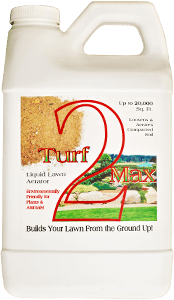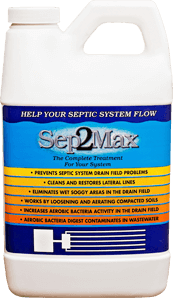Lawn aeration has become enormously popular in the last 15 years. Traditional methods include core or tine aeration. This involves the mechanical removal of soil plugs or cutting slits through the upper layer of the soil.
The primary purpose of lawn aeration is to increase water and air exchange into the root zone. By accomplishing this, the soil is able to respirate or aerate more efficiently. However, according to a recent Iowa State Study, core aeration typically affects only 3-5% of the root zone.
Common sense dictates that due to the spacing and depth of the core aerator tines, it does make sense that only limited aeration can be achieved!
Properties of Healthy Soil
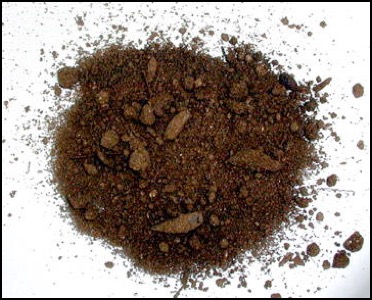 First, let’s define the two following terms, soil and ideal soil.
First, let’s define the two following terms, soil and ideal soil.
Soil is a complex medium of organic and inorganic materials that provides water and nutrients for plant growth and development; a substance most land life depends on.
Ideal Soil is the area where your turf roots are or your tree roots, or your vegetable roots … would contain available moisture for 5-8 days, yet water would not stand on the surface for more than a few minutes following a heavy rain.
What Is Soil Made Of?
Soil’s ingredients are organic (dead and decaying matter, living organisms) and inorganic (air, water, minerals including gravel, sand, silt, and clay). Organic materials range from 2-4% of total weight of the soil. Air and water fill the gaps between the larger particles.
Since healthy soils are alive with life forms and their remains, there must be an abundant supply of oxygen available to the organisms present.
A typical soil supporting rich vegetative growth and serving as a host for insects, worms, and microbes is full of pores. This pore space should be at least 50%, with 25% occupied by air and 25% occupied by water.
Soil Particle Size
The ability of soil to hold air depends on soil particle size and how well the particles pack and cling together, forming a solid mass. The particle size of clay is 0.005mm or less.
Since it’s so small, it can pack very closely together, thus eliminating all of the air and water. This virtually eliminates the ability of the soil to support life!
Ever tried to grow anything on pure clay?
Soil Pore Space
Another factor is that when air enters the soil it contains both oxygen and carbon dioxide. Normal respiration by plant roots and soil microbes depletes the oxygen content and increases the carbon dioxide content.
If the soil pore space is reduced, the carbon dioxide does not diffuse properly and you end up with anaerobic (no oxygen, lots of carbon dioxide that is toxic to plant roots) and then you REALLY can’t grow anything in it.
The answer is aeration, but aeration does a lot more than you think! Besides the obvious advantage of good drainage … and good drainage isn’t really the result of poking holes in the dirt!
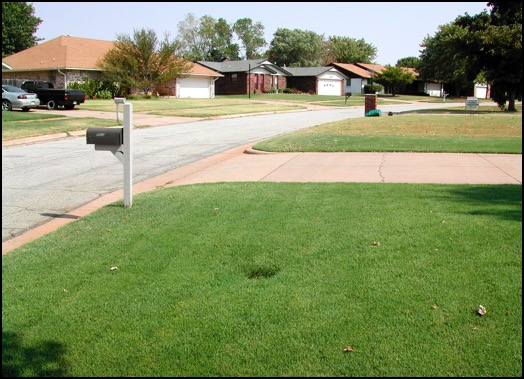
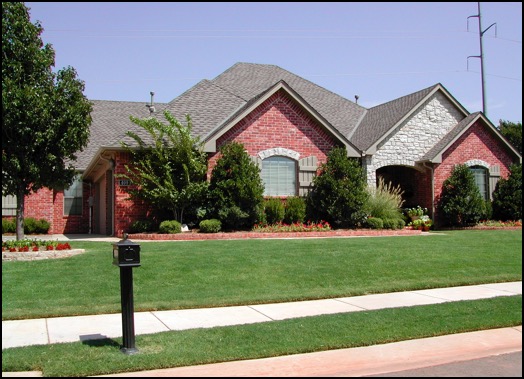
Why is Soil Aeration Essential?
The Colorado State University Cooperative Extension says: “Soil compaction is the primary factor limiting plant growth in urban soils.”
Compacted soil can retard the ability of plants to use nutrients. Nutrients may be present in the root zone, but may not be available to the plant in saturated soil, or compacted soil, or soil with low biological activity. Remember, living organisms in the soil need oxygen, therefore compacted soil reduces biological activity.
Effects of Sodium in the Soil
Excess sodium, usually from your water source, can compact soil and keep turf from using the nutrients in the soil. Sodium contributes to compaction because it’s positively charged, while clay is negatively charged. The sodium smashes the clay together, causing compaction. The technical term is clay particle dispersion.
Excess sodium also limits the nutrients available to the plants because sodium occupies the exchange sites (surfaces of soil particles and organic matter where nutrients are) and displaces other nutrients like magnesium, potassium, hydrogen, and ammonium.
An extraordinary property of Turf2Max (that you never get with mechanical aeration) is that it removes sodium away from the plant roots below the root zone. When sodium is out of the way, the plants have more nutrients available.
Turf2Max Removes Excess Hydrogen Ions
Another problem that commonly occurs is reduced nutrient storage due to acidic soils. Soils with an acidic pH contain a higher percentage of hydrogen (H⁺) ions. The H⁺ ions attach to the negatively charged clay soil exchange sites, which is the storehouse of nutrients. Therefore fewer sites are available for nutrients. The higher the clay percentage, the worse this problem becomes.
Turf2Max with its negatively charged functional groups will remove a portion of the H⁺ and allow the nutrients to attach to the sites. For detailed information on how this works, go to the pH of soil page.
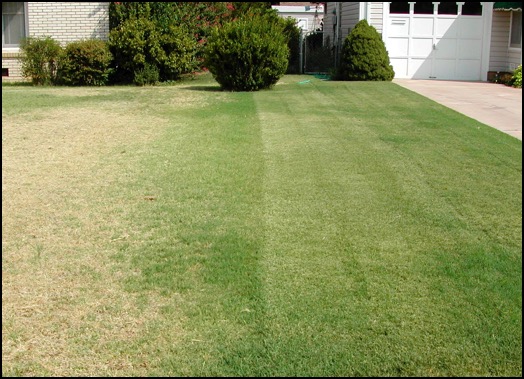
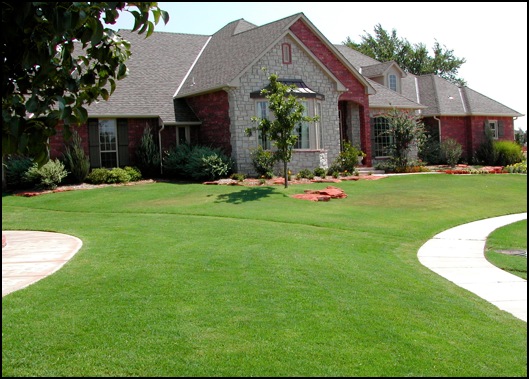
Best Time to Apply Turf2Max?
When is the best time to aerate your lawn? There really is not a best time. If the soil is having compaction and/or drainage issues, now is the best time.
